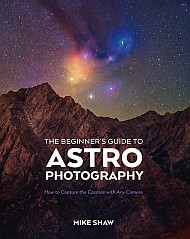Astronomy
Webb sees galaxy mysteriously clearing fog of early Universe
Using the unique infrared sensitivity of the NASA/ESA/CSA James Webb Space Telescope, researchers can examine ancient galaxies to probe secrets of the early Universe. Now, an international team of astronomers has identified bright hydrogen emission from a galaxy in an unexpectedly early time in the Universe’s history. The surprise finding is challenging researchers to explain how this light could have pierced the thick fog of neutral hydrogen that filled space at that time.
Courts Are Rejecting Politicized Attacks on Care for Trans Kids
Gender-affirming care attacked by right-wing groups is being reaffirmed by medical reviews and in the courtroom
What time is the partial solar eclipse today?
Send in the clones: the 18 most famous clones from sci-fi movies and TV shows
How ‘Qudits’ Could Boost Quantum Computing
“Qudits,” the multi-dimensional cousins of qubits, could make quantum computers more efficient and less prone to error
Watch wind whirl from the Sun
Aside from sunlight, the Sun sends out a gusty stream of particles called the solar wind. The ESA-led Solar Orbiter mission is the first to capture on camera this wind flying out from the Sun in a twisting, whirling motion. The solar wind particles spiral outwards as if caught in a cyclone that extends millions of kilometres from the Sun.
Solar wind rains down on Earth's atmosphere constantly, but the intensity of this rain depends on solar activity. More than just a space phenomenon, solar wind can disrupt our telecommunication and navigation systems.
Solar Orbiter is on a mission to uncover the origin of the solar wind. It uses six imaging instruments to watch the Sun from closer than any spacecraft before, complemented by in situ instruments to measure the solar wind that flows past the spacecraft.
This video was recorded by the spacecraft's Metis instrument between 12:18 and 20:17 CEST on 12 October 2022. Metis is a coronagraph: it blocks the direct light coming from the Sun's surface to be able to see the much fainter light scattering from charged gas in its outer atmosphere, the corona.
Metis is currently the only instrument able to see the solar wind's twisting dance. No other imaging instrument can see – with a high enough resolution in both space and time – the Sun's inner corona where this dance takes place. (Soon, however, the coronagraph of ESA's Proba-3 mission might be able to see it too!)
The research paper that features this data, ‘Metis observations of Alfvénic outflows driven by interchange reconnection in a pseudostreamer’ by Paolo Romano et al. was published today in The Astrophysical Journal.
Solar Orbiter is a space mission of international collaboration between ESA and NASA, operated by ESA.
[Technical details: The starting image of the video shows the full view of Solar Orbiter's Metis coronagraph in red, with an image from the spacecraft's Extreme Ultraviolet Imager in the centre (yellow). Zooming to the top left of this view, we see a video derived from Metis observations. The vertical edge of the video spans 1 274 000 km, or 1.83 solar radii. The contrast in the Metis video has been enhanced by using a ‘running difference’ technique: the brightness of each pixel is given by the average pixel brightness of three subsequent frames, minus the average pixel brightness of the three preceding frames. This processing makes background stars appear as horizontal half-dark, half-light lines. Diagonal bright streaks and flashes are caused by light scattering from dust particles close to the coronagraph.]
Catch a Deep Partial Solar Eclipse Spanning the North Atlantic This Weekend
Got clear skies this weekend? If clouds cooperate, observers in the North Atlantic and surrounding regions may witness a rare spectacle: a partial solar eclipse. This is the second eclipse of 2025, and bookends the first eclipse season of the year. The season started with March 14th total lunar eclipse. Depending where you are observing from, this is a shallow to a deep partial, ‘almost’ total solar eclipse.
New documentary 'Children of the Sky' asks the bold question: Can we raise kids in space? (op-ed)
There are a Billion Craters Waiting to Be Explored Near the Moon's South Pole
The focus is all on the Moon at the moment as we strive to establish a permanent lunar base. At the south polar region there are permanently shadowed craters protecting pockets of water ice. Korea’s Pathfinder Lunar Orbiter (KPLO) has been capturing images of these craters using its ShadowCam instrument. Now, using that data, planetary scientists are using a machine learning algorithm to identify over a billion impact craters in the region, deep inside the shadowed craters and each is at least 16 metres in diameter.


